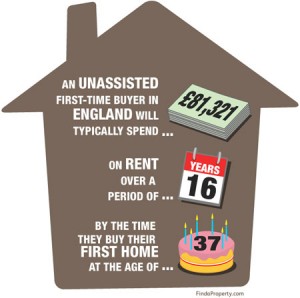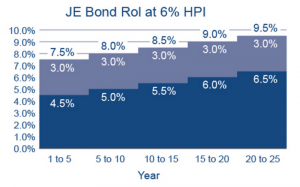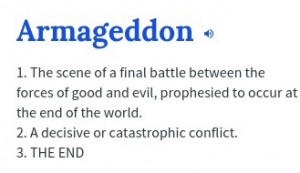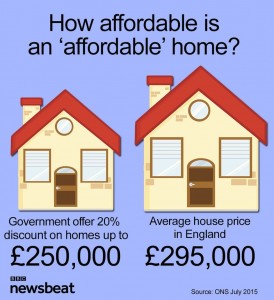Below Market Value (BMV) properties are residential properties that are (somehow) available below their market value. This is normally because the owners are faced with some kind of financial difficulty and want to or need to dispose of their property quickly and without going through a protracted marketing and sales process. The precursor to this is quite often the threat of repossession. In recent years, a whole new industry has sprung up around Below Market Value properties. Property investment chat rooms are full of individuals claiming to have found a Below Market Value (BMV) property at a 10%,15% even 20% below its market value.
 From my experience there really is no such thing. The guidance from the Royal Institute of Chartered Surveyors on how a surveyor should value residential property is contained in Appendix 5.1 of the Royal Institute for Chartered Surveyors Appraisal and Valuation Standards (the famous Red Book).
From my experience there really is no such thing. The guidance from the Royal Institute of Chartered Surveyors on how a surveyor should value residential property is contained in Appendix 5.1 of the Royal Institute for Chartered Surveyors Appraisal and Valuation Standards (the famous Red Book).
The basis for the valuation of a residential investment property is normally its’ market value and is defined in the Chartered Surveyors hand book as:
‘The estimated amount for which a property should exchange on the date of valuation between a willing buyer and a willing seller in an arm’s-length transaction after proper marketing wherein the parties had each acted knowledgeably, prudently and without compulsion.’
Therefore, if as an investor you think that a property is worth £200,000 because maybe a similar property sold for that last year, and you buy it for £180,000 you might conclude or be told you are getting the property for 10% Below Market Value (BMV).
Garbage, if the property has been marketed i.e. advertised by an estate agent and unless you have held a gun to the seller’s head, the market value of that property is £180,000.
 Where a Below Market Value property could exist is if the property was not fully marketed first, a trick of many agents to offer it to the select few “professional” buyers. Consider this an Agent is paid 1.5% commission on our £200,000 property selling for £200k he gets £3,000 selling for £180,000 he gets £2,700, just £300 difference, for the guarantee that the landlord will ask him to let the property at 10% of the rent say another £1,000 approximately. And don’t forget that this will be recurring every 12 or 24 months when the tenant moves on.
Where a Below Market Value property could exist is if the property was not fully marketed first, a trick of many agents to offer it to the select few “professional” buyers. Consider this an Agent is paid 1.5% commission on our £200,000 property selling for £200k he gets £3,000 selling for £180,000 he gets £2,700, just £300 difference, for the guarantee that the landlord will ask him to let the property at 10% of the rent say another £1,000 approximately. And don’t forget that this will be recurring every 12 or 24 months when the tenant moves on.
Lower prices also occur where property buyers are able to access so called ‘distressed or motivated sellers’ who cannot afford or want to go through the normal marketing and sales exercise as they are facing eviction by the mortgage lender. Now I do not think that is very ethical or nice way to buy property, you really have to be one very hard person to look a distressed seller in the eye and squeeze the last £ from them. Not a person I want to be.
 The one instance where you really can buy a BMV property because of the speed and unpredictable nature of the auction process (you are never sure how many and what buyers you are going to get) it is possible that properties bought through auction will be cheaper than the market value.
The one instance where you really can buy a BMV property because of the speed and unpredictable nature of the auction process (you are never sure how many and what buyers you are going to get) it is possible that properties bought through auction will be cheaper than the market value.
But beware, the auction market is full of sharks and pitfalls.
Firstly the auction market is made up of “regulars” and “virgins”. The regulars can spot a virgin a mile off and as long as they don’t go for the properties the regulars have staked out then they are left alone. However, if as they often do the regulars let each other know which properties they want and the spoils are divided up, the unwritten rule is “don’t bid against your fellow regulars”.
But you go against a regular they will bid you up, often working together so you think it’s a real bargain, just so you pay well over the real price. If I cannot get it then I want you to pay well over the real price is the attitude.
I have been in the property buying and selling market for 35 years and attended auctions but never sold or bought a property through one. A telling statistic.
The property market is full of sharks and robbers and recently the ones that were selling worthless lots of land in fields that would never get planning approval have moved into the new fertile area of the new Below Market Value property industry. It emerged during the previous property boom because unscrupulous companies latched onto the large potential profits of buying property at a discount and then renting these investment properties back to their original owners. (This is distinct to the now well established and regulated Equity Release or Lifetime Mortgages)
Favourable financing conditions, and institutions that turn a blind eye to the ethics of the whole thing, have meant that these companies have used their instant paper profits made on these transactions to borrow additional funds to expand their operations offering to purchase a distressed sellers property for cash as well as sorting out the legal side of the transaction.
 Morally there are arguments for and against these companies who use their ‘negotiating’ skills and the desperate situation of the seller, (who often need to get their hands on cash fast;) to obtain a significant discount to the value of the property. They argue that they are providing a useful service for their clients; others (including me) would say they prey on the vulnerability and desperation of the less fortunate members of our society. As the BMV industry settled down the and many of the early adopters moved on they developed a spin off sector aimed at equally unethical landlords & property investors who want to emulate the success of those companies by locating their own ‘motivated sellers’ and purchasing Below Market Value properties that they either keep or sell on at an instant profit.
Morally there are arguments for and against these companies who use their ‘negotiating’ skills and the desperate situation of the seller, (who often need to get their hands on cash fast;) to obtain a significant discount to the value of the property. They argue that they are providing a useful service for their clients; others (including me) would say they prey on the vulnerability and desperation of the less fortunate members of our society. As the BMV industry settled down the and many of the early adopters moved on they developed a spin off sector aimed at equally unethical landlords & property investors who want to emulate the success of those companies by locating their own ‘motivated sellers’ and purchasing Below Market Value properties that they either keep or sell on at an instant profit.
Companies and individuals have set up to exploit this property investor led greedy feeding frenzy. Property investment chat rooms have been taken over by almost crooks masquerading as property professionals.
These individuals set themselves up as Below Market Value gurus and introducers either offering to sell their fooll-proof Below Market Value finding system or increasingly to sell potential investors so called Below Market Value leads to individuals they have tracked down who are ‘desperate to sell’.
The obvious question is always, why? Why would these individuals be passing on leads for so called Below Market Value properties if they are such great deals? The simple answer is that they are ‘chancers’.
If they can sell a few leads for a couple hundred pounds and then an introducer’s fee for the sale of a property at a couple of thousand, it’s not a bad days’ ‘pay’! One only has to look at the whole off-plan debacle for parallels. Here again naive and overly ambitious property investors were manipulated by unscrupulous middle men out to make a ‘fast buck’. The result is that many property investors have been left high and dry having over paid for new investments and are now facing financial heartache for many years to come.
These are not the only dangers lurking with Below Market Value properties. Even where a landlord manages to side step the middle men and does all their own leg work there is a little know hidden danger with so called Below Market Value property which all relates to the provisions of the 1986 Insolvency Act. The result is that a landlord who legitimately purchases a Below Market Value property could find that several years down the line and unbeknown to them that the seller has become bankrupt and suddenly their trustee is coming after the landlord with a court order to either reverse the sale or claim back the difference between the open market value of the property and it’s distressed sale price.
This is because the Insolvency Act allows trustees of a bankrupt to protect themselves from the bankrupt giving away their assets or selling them at below the market price. A landlord purchasing a Below Market Value property is potentially exposed to these provisions for up to 5 years assuming no fraud or the parties are associated in any way. The older I get the more I believe in the karma of property investment-
‘what goes around comes around’.
We must not forget that much of the promised profit from Below Market Value properties is at the expense of desperate and easily exploited individuals who have ended up in financial difficulties.
There is poetic justice in a property investor motivated by greed and prepared to exploit vulnerable individuals to end up with:
- a ‘crap’ investment property,
- occupied by dodgy and bankrupt tenants,
- who are then taken to court by disgruntled trustees and
- to top it all because of a falling housing market end up paying more than the property is in fact worth.
My dislike of a significant proportion of the people who work in my industry led me to develop the Joint Equity Co-Ownership structure which is the complete opposite, we are ethical, transparent and honest.
When we say we have Resident Partners and Non Resident Partners (our investors) the key word is Partners. When we buy into a property it is for 25+ years, and we want that property to be one that grows in value over that period not makes an artificial profit in year 1 because we have screwed the seller who is between a rock and hard place.
We look after our Partners as if they are our own family, and when we wake up at 4am (as we all do) I want our investors and our residents to have a clear conscience and with Joint Equity we all do.
As you will probably be aware I have also been a developer for most of the last 35 years and now I will rarely support ba Resident Partner who buys a new build from other developers.
Why? Developers have a different view of the world to long term investors. They build and sell and walk away with the profits.
The buyer is then left with any issues the property has in the future due to small room sizes, plot irregularities, poor workmanship or estate issues.
Joint Equity and our developments are quite the opposite, we build for the future and we are the co-owner for 25+ years so any problem the Resident Partner has is equally our problem. We rely on the asset value increasing to make our money and the only way we can ensure that is to design and build the very best we can.
So beware whether you are a buyer or investor you can get into deep trouble if you let greed overrule good sense.
 Here at Joint Equity we are not infallible but we do not set out with a black heart and the intent to turn everyone over.
Here at Joint Equity we are not infallible but we do not set out with a black heart and the intent to turn everyone over.
We are ethical in all our dealings with Partners and sellers and we are proud of it.
Brad Bamfield
CEO and Founder of Joint Equity Co-Ownership Scheme
 The average amount saved by the 35% of tenants who do save for a deposit is £12,125 – about 7.3% of today’s average house price of around £165,000. That’s significantly less than the 10 to 20% which is typically required (approx. £16,000 to £30,000).
The average amount saved by the 35% of tenants who do save for a deposit is £12,125 – about 7.3% of today’s average house price of around £165,000. That’s significantly less than the 10 to 20% which is typically required (approx. £16,000 to £30,000). Brad Bamfield CEO of Joint Equity said, “These stats continue to shock us which is why we’re determined to help educate people about alternative home ownership options. For instance, our Resident Partners can now live in their own home in co-ownership with us on a 50/50 basis. In nearly all cases if you can afford to rent you can afford to buy with Joint Equity.”
Brad Bamfield CEO of Joint Equity said, “These stats continue to shock us which is why we’re determined to help educate people about alternative home ownership options. For instance, our Resident Partners can now live in their own home in co-ownership with us on a 50/50 basis. In nearly all cases if you can afford to rent you can afford to buy with Joint Equity.”















 ister David Cameron described the move as a “huge shift”, claiming it marks the biggest use of such a policy since Margaret Thatcher and Michael Heseltine started the regeneration of London’s Docklands in the Eighties.
ister David Cameron described the move as a “huge shift”, claiming it marks the biggest use of such a policy since Margaret Thatcher and Michael Heseltine started the regeneration of London’s Docklands in the Eighties.

